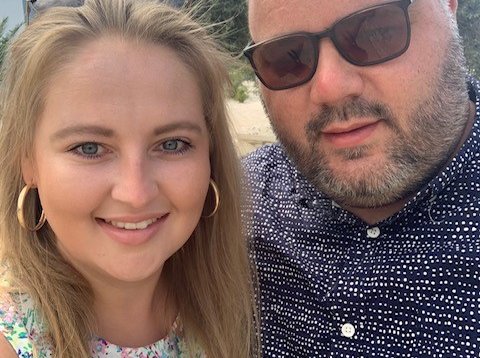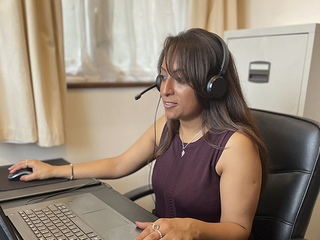What is chronic myeloid leukaemia (CML)?
Chronic myeloid leukaemia is a type of blood cancer that affects your myeloid cells (a type of white blood cell). Most people with CML can live a normal life, and will have treatment at home.
Is CML blood cancer?
The word cancer describes diseases where cells start to grow out of control. A chronic cancer develops slowly, as opposed to an acute (fast developing) cancer.
Leukaemia is a type of blood cancer that affects your blood cells – usually your white blood cells.
Chronic myeloid leukaemia (CML) is therefore a slow-developing type of blood cancer that affects a group of white blood cells known as myeloid cells.
Your blood cells
Your body needs new blood cells all the time and they are made in the bone marrow (the spongy material inside some of your bones). There are three main types of blood cell:
- Red blood cells carry oxygen around your body.
- White blood cells help your body fight infection.
- Platelets stick together to stop you bleeding.
Most blood cells are made in your bone marrow. In a healthy person, stem cells develop into something called myeloid blasts, before eventually turning into mature (fully functioning) white blood cells. If you have CML, your bone marrow makes too many myeloid cells which don't develop properly into normal white blood cells.
Most of the white blood cells that are affected are called granulocytes, which are a mix of neutrophils, basophils and eosinophils. People with CML have a high number of white blood cells, and you might hear your doctor talk about your “blood counts” on your test results. This means how many of each type of cell you have in your blood and bone marrow.
What causes CML?
Around 800 people are diagnosed with CML each year in the UK.
The most important thing to know is that CML isn’t caused by anything you have done. You aren’t born with it, and it can’t be passed on to your children or other relatives.
Scientists don’t know exactly why some people get CML, but there are some things that affect how likely you are to develop it.
CML is more common in older people. The median age at diagnosis is 60 years, which means that half of people diagnosed with CML are under 60 and the rest are over 60.
CML is slightly more common in men than in women, but we don’t know why.
The only clear risk factor for developing CML is exposure to a large amount of high-energy (ionising) radiation, on a similar scale to an atomic bomb explosion. It’s extremely unlikely that anybody in the UK will be exposed to a level of radiation high enough to increase their chance of getting CML.
"At first it feels like everything's changed, but I can still live my day to day life. I take tablets everyday and am a bit more careful in what I do, but I'm still me."
Kate, living with CML since 2022.
Read Kate's story about what it's like to live with a chronic blood cancer.

The Philadelphia chromosome
Doctors look for something called the Philadelphia chromosome to help diagnose CML. You can read more about the tests you’ll have to diagnose CML on our page about testing.
Most cells contain a set of instructions, stored in chromosomes. Chromosomes are made of genes, and genes make proteins which tell your cells what to do. There are 23 pairs of chromosomes in each cell of your body, and their instructions normally stay the same when your cells divide to create new cells.
However, if you have CML, chromosomes 9 and 22 get mixed up and create something new called the Philadelphia chromosome. The BCR gene from chromosome 22 ends up being next to the ABL1 gene from chromosome 9. This new fusion gene, called BCR::ABL1, creates an abnormal protein known as a tyrosine kinase. Your body has lots of different tyrosine kinases and most of them work normally, but the abnormal BCR::ABL1 protein is what tells your bone marrow to make too many myeloid cells.
Treatment for CML aims to stop this protein from being produced, and therefore reduce the number of myeloid cells in your blood and bone marrow.
Phases of CML
There are three phases of CML, and most people will be diagnosed in the first phase, called the chronic phase. Others will be diagnosed in the high risk chronic phase (sometimes called the accelerated phase) or the blast phase.
Your treatment and outlook will depend on which phase of CML you have. Your hospital team will be able to tell you more about your individual diagnosis and what it means for you. It’s important to know that most people with CML stay in the chronic phase, which is the easiest phase to treat. If the disease does develop, it doesn’t always do it phase by phase. Rarely, people might move from chronic phase straight to the blast phase. More often, having treatment at the high risk chronic phase or blast phase can move you back to the chronic phase.
Chronic phase
Most people (nine in 10) are diagnosed with CML in the earliest phase, called the chronic phase.
In this phase, the disease is developing slowly, and it may be picked up by a routine blood test. The overall number of immature myeloid blasts in your blood and bone marrow may still be low. Some people do begin to feel unwell, but others may have mild symptoms or even no symptoms at all.
Read our information about symptoms.
High risk chronic phase (sometimes called the accelerated phase)
If CML is left untreated, it can begin to develop more quickly and reach something called the high risk chronic phase. You might also hear to this referred to as the accelerated phase. In this phase, you have more immature myeloid blasts in your blood and bone marrow. They take up a lot of room where mature, healthy blood cells should be.
You might also have more obvious symptoms in this phase.
Blast phase
Blast phase CML is sometimes called the acute phase, or blast crisis. This means you have too many immature myeloid blasts in your blood and bone marrow, and not enough mature healthy cells. You are likely to have more severe symptoms at this stage.
Blast phase CML is similar to acute leukaemia, and some people may develop something called acute myeloid leukaemia (AML) or acute lymphoblastic leukaemia (ALL).
Risk scores
As part of working out what phase the CML is in, your doctors will also work out your ‘risk score’. This is to help them plan the best treatment for you. Risk scores are less important today than before the introduction of treatment with tyrosine kinase inhibitors (TKIs), because most people with CML respond to these drugs regardless of their risk score.
There are four risk scores for CML that you might hear mentioned: ELTS, EUTOS, Hasford and SOKAL. ELTS is most commonly used, and looks at:
- your age
- the size of your spleen
- the number of blast cells in your blood
- your platelet count.
You can ask your doctor to explain your risk score and what it means for you.
How will having CML affect me?
It's completely normal to feel shocked, upset or frightened when you’re told you have CML. Lots of people say that when the doctor or nurse first explained their diagnosis, “cancer” or “leukaemia” was the only thing that stuck in their head.
This can be hard to process, and getting a CML diagnosis can affect you emotionally and psychologically as well as physically. It may take some time for the diagnosis to sink in, and you could have good days and bad days.
If you would like counselling or psychological support to help you come to terms with your diagnosis, your hospital team or GP can refer you. In England you can also refer yourself for talking therapy on the NHS.
Remember that however you feel, it’s OK. You won’t be alone in feeling the way that you do. There are around 280,000 people living with blood cancer in the UK, and many of them will have CML and understand exactly what you’re going through.
We have more information about looking after your mental and physical health, and if you need someone to talk to, you call call our Support Service for a chat on 0808 2080 888 or email [email protected]

Worried about anything or have questions?
If you need someone to talk to, please don't hesitate to contact our Support Service by phone or email.
